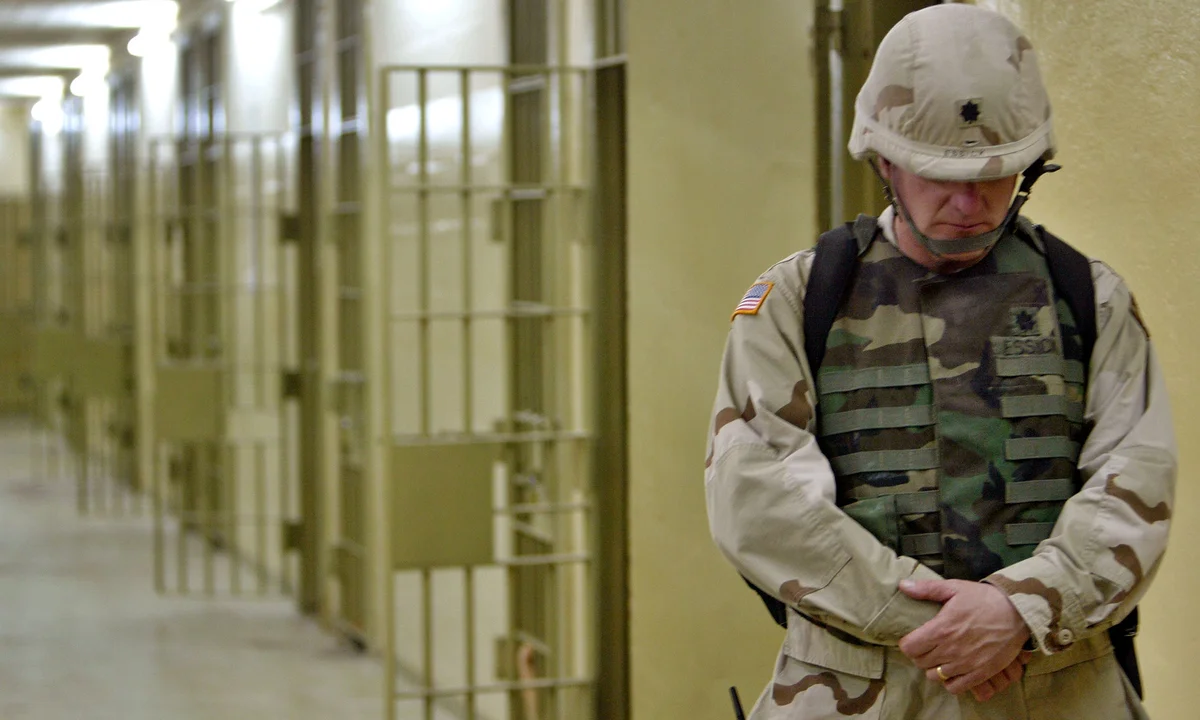
This is a screenshot from the CC-licensed doco
mentioned in the last post
This post continues from last week’s post on a Russian prison system documentary. As I said, the poor living conditions may be the least of your worries. The second issue is kinds of abuses the guards dish out. I’m sure you’ve seen plenty of exposes of stunning abuse and torture by prison guards from Abu Ghraib to stories of the kind of torture is employed by Middle Eastern countries to suspects in the war on terror. But the doco explains a method that I think I’d dread more than any of them. It’s called a cell press.
But first, some introductory asides. Russia has an extremely complex culture of crime (including organised crime). One concept that dates back as early as the 1920s, and still exists now is the thief in law. These are the top caste of Russian gangs, the most respected. They follow (or claim to follow, in practice people are a lot more opportunistic) an extremely stringent “honour” code. Their whole life is to be subsumed to the criminal world. They are to have no permanent ties to anyone outside the gang: especially no wife or permanent girlfriend. Casual relationships are ok.
To be a thief-in-law, you’re not allowed any legitimate source of income. You can only earn through criminal activity. And you’re not allowed to cooperate with any government authority in any way. This extends to the most trivial thing (eg. a warden asking someone to pick up an object). In fact, during WWII, some of the thieves in law decided fighting the Nazis was more important and so volunteered for the army in exchange for release. As soon as WWII ended they were branded as “bitches” (a term that’s much more offensive in Russian) by those who refused to go, leading to a conflict between the two factions inside the Gulags called the Bitch Wars. Silly as it sounds to the outsider — a “war”? — many camps had to be split into two completely sections (bitches and non-bitches).

End of aside. Back to the cell press. In Russian prison slang, to “press” means to psychologically terrorise a prisoner with the aim of breaking them. These were and are used on prisoners the administration considers particularly negative. Usually these would be thieves-in-law that the administration wanted evidence from, or thought they should be made an example of, to be forced to break their code, to sign a statement of cooperation with authorities that would brand them a bitch and so on. As you can imagine from the above descriptions, these are not the kind of men to break easily.
The press cell is a regular prison cell they would put you in with something like 10-30 other prisoners. These would have been hand-picked by the administration as willing to work for them. They would then turn a blind eye to what happened in the cell. So you’re in a room with about 30 sociopaths and all of them know they can beat you or rape you at any time and to any extent with no interference from the outside. The main torture is the fact that you can be in such a cell for several months at a time. The target of this “technique” is afraid to sleep and probably has PTSD of unimagined proportions. What also exacerbates it is the fact that there’s only one victim per cell and every other inmate in that cell has been handpicked by the authorities to annihilate the victim. Or as as prison reform activist in the doco said, to “turn a person into an amoeba”.
It’s kind of funny that seeing all this I had one thought. It would seem that even for someone who committed a brutal murder, Russian society might actually be better off releasing this person outright and having them walk the streets as opposed to jailing them in a Russian prison. Because even this killer seems likely to do far less damage compared to what he will become once he goes through the meat grinder.
And yet even these things aren’t the worst parts of prison existence — to be concluded next post.





0 Comments